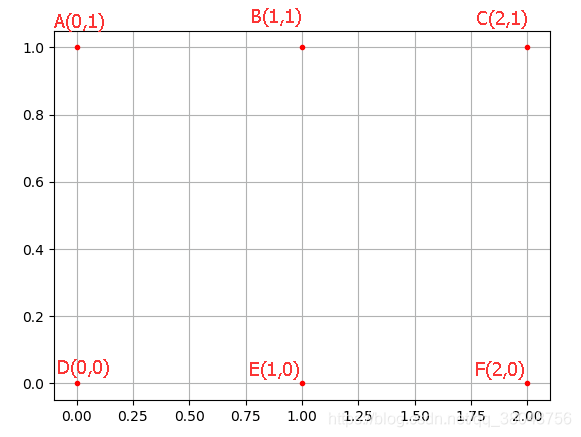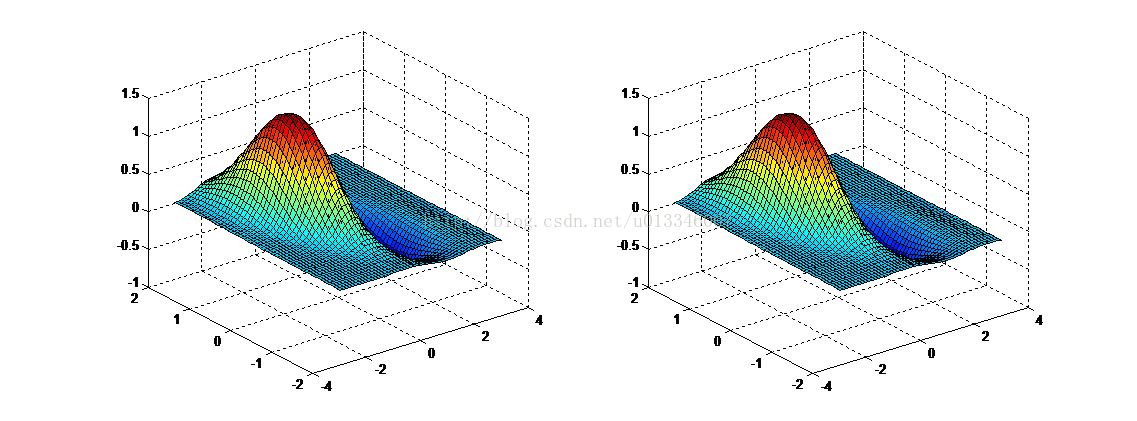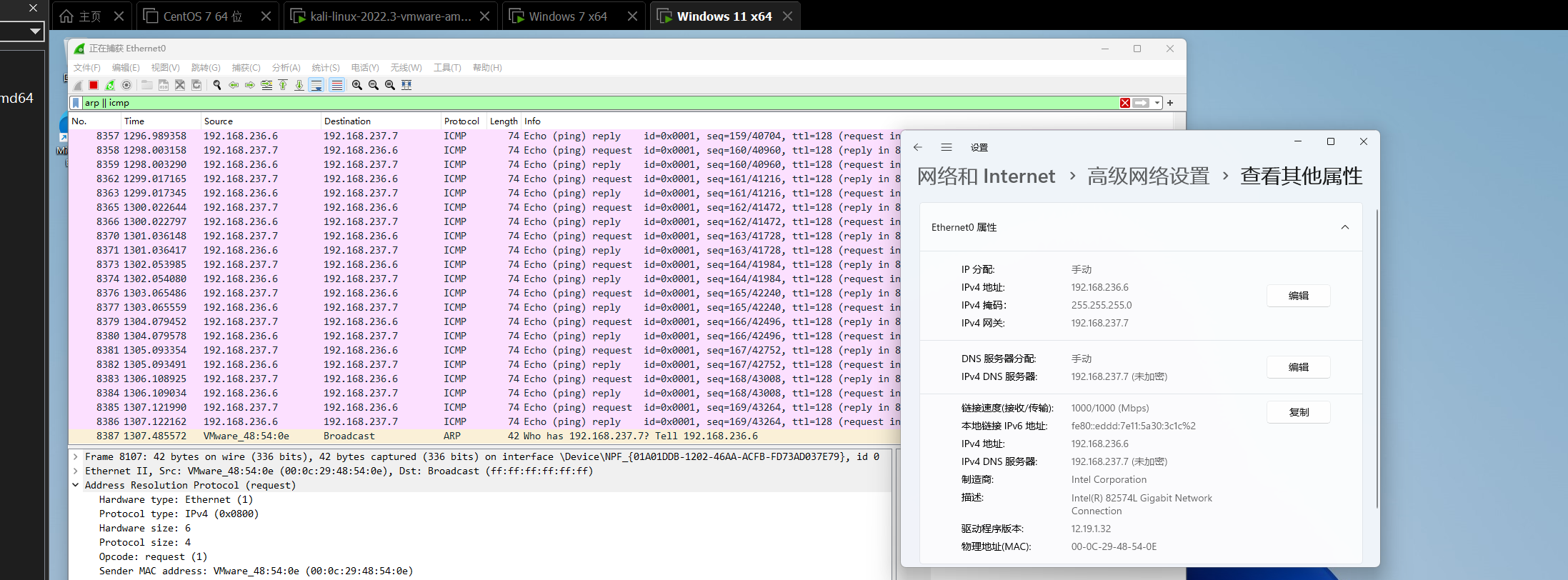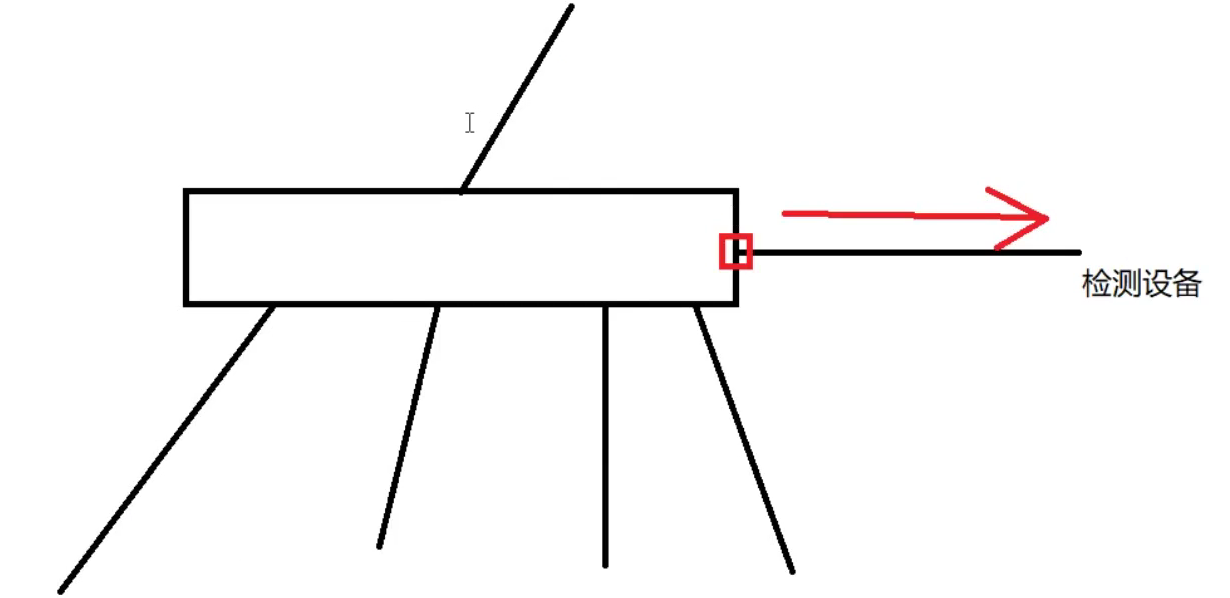目录
- 1.meshgrid函数介绍
- 2.meshgrid函数官方说明
1.meshgrid函数介绍
参数:
*xi,也就是x1,x2,…,xn :表示网格坐标的一维数组。
copy:默认为True,如果为False,就返回原始数组以节省内存。
sparse:默认值为False如果为True,则返回一个稀疏网格以节省内存。
indexing:输出的笛卡尔(默认为“ xy”)或矩阵(“ ij”)索引。(后面有例子介绍该参数)
return :返回网格坐标矩阵(返回值为list,list中包含各个方向的坐标矩阵)
看到这可能还不是很理解,举个例子就很明白了,如下图所示,下图二维平面中有6个网格坐标,可以看出他们的横坐标为[0, 1, 2],纵坐标为[0, 1],倘若只知道他们的横坐标和纵坐标的一维数组,怎么构建这6个网格坐标,meshgrid的作用就是这个。

>>> a = [0, 1, 2]
>>> b = [0, 1]
>>> np.meshgrid(a,b)
[array([[0, 1, 2],[0, 1, 2]]), array([[0, 0, 0],[1, 1, 1]])]
>>>
返回的结果现在还不是6个点的坐标,但是将a中的元素与b中的每个元素一一对应就得到了上述6个点的坐标。
那么indexing的作用是什么呢?
>>> np.meshgrid(a,b,indexing = 'ij')
[array([[0, 0], [1, 1],[2, 2]]), array([[0, 1],[0, 1], [0, 1]])]
>>>
也就是若indexing = ‘xy’,返回的矩阵形状为(N2, N1, N3,…Nn),其中Ni = len(xi)。若indexing = ‘ij’,则返回的矩阵形状为(N1, N2, N3,…Nn)。具体的影响就是处理数据时,读取数据方式不同。
xv, yv = np.meshgrid(x, y, sparse=False, indexing='ij')for i in range(nx):for j in range(ny):# treat xv[i,j], yv[i,j]xv, yv = np.meshgrid(x, y, sparse=False, indexing='xy')for i in range(nx):for j in range(ny):# treat xv[j,i], yv[j,i]
sparse为True时,返回稀疏的网格(为了节省内存),也就是该坐标矩阵下的元素有哪些(由于每行/列下的元素都一样,所以返回一行或一列就可以知道该坐标矩阵下的元素)。
>>> x = np.meshgrid(a,b,sparse= True)
>>> x
[array([[0, 1, 2]]), array([[0],[1]])]
>>>
接下来把meshgrid的结果变为最终的坐标点:
>>> a = [0, 1, 2]
>>> b = [0, 1]
>>> np.meshgrid(a,b)
[array([[0, 1, 2],[0, 1, 2]]), array([[0, 0, 0],[1, 1, 1]])]
>>> x, y = np.meshgrid(a,b)
>>> x.flatten()[:, np.newaxis]
array([[0],[1],[2],[0],[1],[2]])
>>> y.flatten()[:, np.newaxis]
array([[0],[0],[0],[1],[1],[1]])
>>> xx = x.flatten()[:, np.newaxis]
>>> yy = y.flatten()[:, np.newaxis]
>>> np.c_[xx, yy]
array([[0, 0],[1, 0],[2, 0],[0, 1],[1, 1],[2, 1]])
>>>
np.newaxis介绍:可以在数组索引中使用np.newaxis对象添加大小为1的新尺寸,如:
>>> a.shape
(5, 7)
>>> a[:,np.newaxis,:].shape
(5, 1, 7)>>> x = np.arange(5)
>>> x[:, np.newaxis]
array([[0],[1],[2],[3],[4]])
>>>
np.flatten()介绍:
原型声明:def flatten(self, order='C'):
Parameters:
order{‘C’, ‘F’, ‘A’, ‘K’}, optional
“ C”表示按行优先(C样式)的顺序展平。“ F”表示按列主(Fortran样式)的顺序展平。“ A”表示如果a在内存中是连续的,则按列优先顺序进行展平;否则,按行优先进行展平。“ K”表示按元素在内存中出现的顺序展平 。默认值为“ C”。
Returns
返回展平为一维的数组副本。
2.meshgrid函数官方说明
meshgrid的官方api
def meshgrid(*xi, copy=True, sparse=False, indexing='xy'):"""Return coordinate matrices from coordinate vectors.Make N-D coordinate arrays for vectorized evaluations ofN-D scalar/vector fields over N-D grids, givenone-dimensional coordinate arrays x1, x2,..., xn... versionchanged:: 1.91-D and 0-D cases are allowed.Parameters----------x1, x2,..., xn : array_like1-D arrays representing the coordinates of a grid.indexing : {'xy', 'ij'}, optionalCartesian ('xy', default) or matrix ('ij') indexing of output.See Notes for more details... versionadded:: 1.7.0sparse : bool, optionalIf True a sparse grid is returned in order to conserve memory.Default is False... versionadded:: 1.7.0copy : bool, optionalIf False, a view into the original arrays are returned in order toconserve memory. Default is True. Please note that``sparse=False, copy=False`` will likely return non-contiguousarrays. Furthermore, more than one element of a broadcast arraymay refer to a single memory location. If you need to write to thearrays, make copies first... versionadded:: 1.7.0Returns-------X1, X2,..., XN : ndarrayFor vectors `x1`, `x2`,..., 'xn' with lengths ``Ni=len(xi)`` ,return ``(N1, N2, N3,...Nn)`` shaped arrays if indexing='ij'or ``(N2, N1, N3,...Nn)`` shaped arrays if indexing='xy'with the elements of `xi` repeated to fill the matrix alongthe first dimension for `x1`, the second for `x2` and so on.Notes-----This function supports both indexing conventions through the indexingkeyword argument. Giving the string 'ij' returns a meshgrid withmatrix indexing, while 'xy' returns a meshgrid with Cartesian indexing.In the 2-D case with inputs of length M and N, the outputs are of shape(N, M) for 'xy' indexing and (M, N) for 'ij' indexing. In the 3-D casewith inputs of length M, N and P, outputs are of shape (N, M, P) for'xy' indexing and (M, N, P) for 'ij' indexing. The difference isillustrated by the following code snippet::xv, yv = np.meshgrid(x, y, sparse=False, indexing='ij')for i in range(nx):for j in range(ny):# treat xv[i,j], yv[i,j]xv, yv = np.meshgrid(x, y, sparse=False, indexing='xy')for i in range(nx):for j in range(ny):# treat xv[j,i], yv[j,i]In the 1-D and 0-D case, the indexing and sparse keywords have no effect.See Also--------index_tricks.mgrid : Construct a multi-dimensional "meshgrid"using indexing notation.index_tricks.ogrid : Construct an open multi-dimensional "meshgrid"using indexing notation.Examples-------->>> nx, ny = (3, 2)>>> x = np.linspace(0, 1, nx)>>> y = np.linspace(0, 1, ny)>>> xv, yv = np.meshgrid(x, y)>>> xvarray([[0. , 0.5, 1. ],[0. , 0.5, 1. ]])>>> yvarray([[0., 0., 0.],[1., 1., 1.]])>>> xv, yv = np.meshgrid(x, y, sparse=True) # make sparse output arrays>>> xvarray([[0. , 0.5, 1. ]])>>> yvarray([[0.],[1.]])`meshgrid` is very useful to evaluate functions on a grid.>>> import matplotlib.pyplot as plt>>> x = np.arange(-5, 5, 0.1)>>> y = np.arange(-5, 5, 0.1)>>> xx, yy = np.meshgrid(x, y, sparse=True)>>> z = np.sin(xx**2 + yy**2) / (xx**2 + yy**2)>>> h = plt.contourf(x,y,z)>>> plt.show()"""









![[MATLAB]中meshgrid函数的用法与实践(学习笔记)](https://img-blog.csdnimg.cn/661f8509d44245b08ec7e29fda0047ba.png?x-oss-process=image/watermark,type_d3F5LXplbmhlaQ,shadow_50,text_Q1NETiBA5aSp6YGT6YWs5YukMjAyMg==,size_15,color_FFFFFF,t_70,g_se,x_16)








